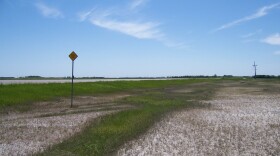What is it about kids and caterpillars? It seems like kids of my generation at some point found a caterpillar and promptly put it (along with some plant material) in a jar with some holes punched in the lid, and watched it so see what would happen.
Kids are still doing it! I recently received a call from our grandkids, Avery and Kellan. They had found a couple caterpillars and were asking for help with identification. They also asked where they could find milkweed to feed them. More about that in a bit.
Caterpillars of course are the larval stage of moths and butterflies. No doubt many of you know the sequence of events in the life cycle of these insects (egg, larva, pupa, adult). The caterpillars are occasionally collected and observed in hopes that they will form a chrysalis and eventually emerge as an adult butterfly or moth.
Most everyone is familiar with the relationship between the monarch butterfly and milkweeds. Monarchs lay their eggs on milkweed and the larvae feed on milkweed. The adult monarchs feed on the nectar of a variety of plants including butterfly milkweed, purple coneflower, blazing star, and goldenrod. But what about all the other larvae and their butterflies and moths?
We generally give it little consideration, but many species are closely tied to certain plants for food and habitat. It may involve a plant family, genera, or species utilized for larval or adult food. They also have preferences for habitat. Knowing these relationships can be helpful in observing a butterfly species as well as provide important aspects of their biology and ecology. For example, many caterpillars will not eat milkweed.
Wooly bears are widely recognized caterpillars. They are the larvae of the Isabella tiger moth. These caterpillars are generalists. They can be found most everywhere and will eat most anything, ranging from herbs to grasses and tree leaves. That is partly why they are so common. Black swallowtail butterflies, on the other hand, prefer prairie hilltops. The main food source for their caterpillars are members of the carrot family or Apiaceae which includes meadow parsnip and wild parsley.
Perhaps we need to be reminded that, like other animals, each species of butterfly and moth has its own unique habitat affinities and food preferences (in this case for caterpillar and adult). So, give that some thought the next time you see a caterpillar, or a moth or butterfly dancing in the summer breeze.





